
NJ Sports Medicine Doctor
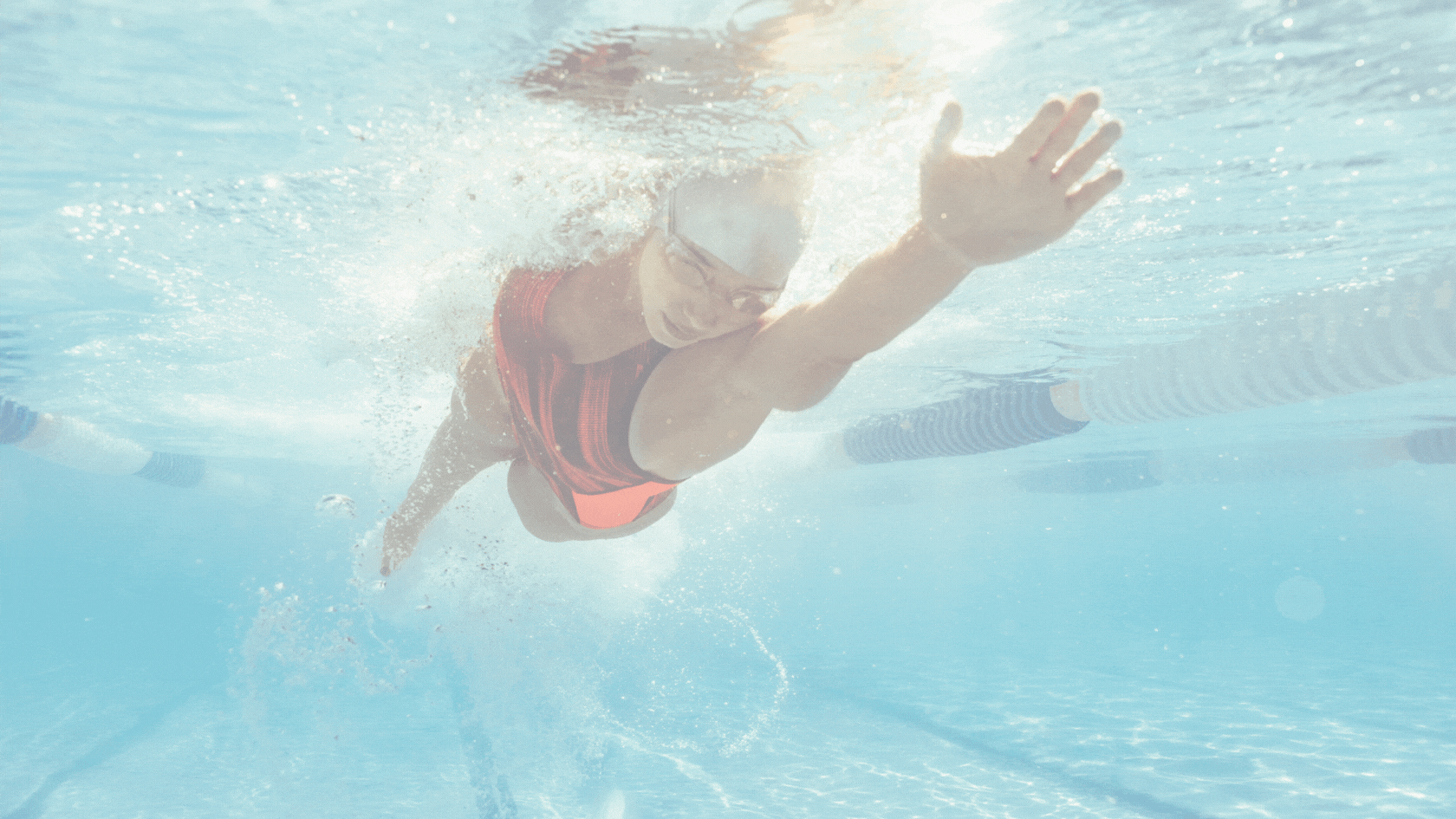
Welcome to New York Sports Medicine Institute, where optimal athletic performance meets comprehensive healthcare expertise. Our dedicated NJ sports medicine doctor is committed to providing personalized and specialized care for athletes of all levels. Whether you’re a seasoned competitor, a weekend warrior, or someone striving for a more active lifestyle, our sports medicine doctor is here to address your unique needs. With a focus on injury prevention, performance enhancement, and rapid recovery, we combine cutting-edge medical techniques with a deep understanding of sports-specific demands. Explore how our sports medicine services can empower you to overcome challenges, reach your peak potential, and thrive in your athletic pursuits.
Request An Appointment With Our NJ Sports Medicine Institute
COMMON CAUSES OF SPORTS INJURIES
While there are many risks associated with playing sports, there are also many benefits. Regular physical activity can help to improve overall health and fitness levels. It can also help to reduce stress and anxiety. For these reasons, it is important to find a balance between the risks and benefits of playing sports. Talk to our NJ sports medicine doctor if you have any concerns about the risks of playing sports.
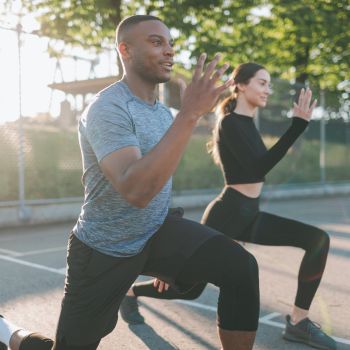
Team sports such as football, hockey, and soccer are particularly dangerous when it comes to concussions and other head injuries. This is due to the contact that often occurs between players. Individual sports such as boxing, mixed martial arts, and wrestling also carry a high risk of concussion.
COMMON SPORTS INJURIES
There are many sports that put players at risk for injury. Some of the most common injuries include concussions, broken bones, and ligament damage. While these injuries can happen in any sport, they are more likely to occur in certain activities. Ligament damage is also a common injury in many sports. This type of injury often occurs when players make sudden changes in direction or stop suddenly. It is common in sports such as basketball, tennis, and volleyball. Concussions are another type of injury that can occur in any sport. A concussion is a type of brain injury that happens when the head is hit hard. Concussions can cause long-term damage if they are not treated properly. Broken bones are also a risk in many sports. These injuries often happen when players fall or are hit by another player. They are common in sports such as football, hockey, and soccer.
Players who participate in contact sports such as football, hockey, and rugby are at a higher risk for concussions. However, any sport can cause a concussion. It is important for all athletes to learn how to prevent and treat concussions.
Players can reduce their risk of injury by wearing proper safety gear and following the rules of their sport. They should also warm up before playing and cool down afterwards. Players should also check in with our NJ sports medicine doctor if they have any concerns about their health. Many of these injuries can be prevented by using proper safety equipment and playing on safe surfaces. However, even with these precautions, accidents can still happen. That is why it is important for all athletes to know how to safely treat these injuries if they do occur.
TREATMENT: NJ SPORTS MEDICINE DOCTOR
Treatment for sports injuries often depends on the type and severity of the injury. Minor injuries such as cuts and bruises can often be treated at home with over-the-counter medication and ice. More serious injuries such as concussions, broken bones, and ligament damage may require more intensive treatment. This may include rest, physical therapy, and surgery. Prevention is always the best treatment when it comes to sports injuries. Wearing proper safety gear, following the rules of the game, and warming up before playing can help to reduce the risk of injury. However, even with these precautions, accidents can still happen. That is why it is important for all athletes to know how to safely treat these injuries if they do occur.
RISK FACTORS
There are a number of risk factors that can contribute to the likelihood of sustaining a sports injury. Some of the most common include:
– Poor conditioning: Lack of physical conditioning is one of the most common risk factors for sports injuries. When muscles, tendons and ligaments are not properly conditioned, they are more susceptible to strains, tears and other injuries.
– Poor technique: Another common cause of sports injuries is poor technique. This can apply to everything from the way you swing a golf club to the way you execute a jump shot in basketball. Improper technique puts unnecessary stress on your muscles and joints, increasing the risk of injury.
– Wearing improper gear: Wearing ill-fitting or inappropriate gear can also lead to sports injuries. This is especially true in contact sports such as football, where wearing the wrong type of helmet or shoulder pads can increase your risk of sustaining a head or neck injury.
– Environmental factors: Inclement weather, poor field conditions and other environmental factors can also contribute to the risk of sustaining a sports injury. Slippery floors, for example, can increase your risk of suffering a serious ankle sprain.
– Poor warm-up: Failing to properly warm up before participating in physical activity can also lead to sports injuries. A proper warm-up helps to loosen your muscles and joints, preparing them for the activity to come.
If you are involved in any type of physical activity, it is important to be aware of the potential risk factors for sports injuries. By taking steps to reduce your risks, you can help to keep yourself safe and healthy while participating in your favorite activities. Contact us today!
Sports Medicine Tips for Aging Athletes: Staying Active and Injury-Free
As athletes age, their bodies undergo various changes that can impact their performance and susceptibility to injuries. Understanding these changes and implementing appropriate strategies is crucial for aging athletes to maintain their activity levels and minimize the risk of injury. In this article, we’ll delve into sports medicine tips tailored specifically for aging athletes, focusing on key areas such as nutrition, training, recovery, and injury prevention. Continue reading to learn more from our NJ sports medicine doctor.
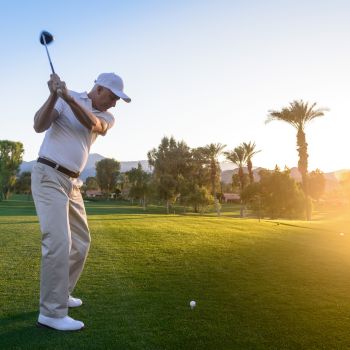
Nutrition for Optimal Performance and Recovery
Proper nutrition plays a fundamental role in supporting the health and performance of aging athletes. As the body ages, its nutritional requirements may shift, necessitating adjustments to dietary habits. A balanced diet rich in lean proteins, complex carbohydrates, healthy fats, vitamins, and minerals is essential for sustaining energy levels, supporting muscle function, and promoting overall well-being.
Key Nutrients for Aging Athletes:
- Protein: Adequate protein intake is crucial for muscle repair and recovery. Aging athletes should aim to incorporate lean protein sources such as chicken, fish, tofu, beans, and legumes into their meals.
- Omega-3 Fatty Acids: Omega-3 fatty acids possess anti-inflammatory properties and can help reduce the risk of joint pain and inflammation. Sources of omega-3s include fatty fish, flaxseeds, chia seeds, and walnuts.
- Calcium and Vitamin D: Maintaining bone health becomes increasingly important as athletes age. Calcium and vitamin D are essential for bone strength and density. Dairy products, leafy greens, fortified cereals, and sunlight exposure are excellent sources of these nutrients.
Training Strategies for Aging Athletes
Tailoring training programs to accommodate the changing needs of aging athletes is essential for optimizing performance while minimizing the risk of injury. A gradual approach that focuses on functional movements, flexibility, strength, and balance can help enhance athletic performance and reduce the likelihood of overuse injuries.
Key Training Considerations:
- Functional Training: Incorporating exercises that mimic movements performed in sports or daily activities can improve functional fitness and enhance overall performance.
- Flexibility and Mobility Work: Aging athletes should prioritize stretching and mobility exercises to maintain flexibility, reduce stiffness, and prevent injuries.
- Strength Training: Resistance training is vital for preserving muscle mass, bone density, and joint stability. Utilizing a combination of bodyweight exercises, free weights, and resistance bands can help aging athletes maintain strength and functionality.
- Balance and Coordination: Incorporating balance and coordination drills into training routines can help reduce the risk of falls and improve athletic performance, especially in sports that require agility and quick reflexes.
Recovery Strategies for Enhanced Performance and Injury Prevention
Optimizing recovery is essential for aging athletes to promote muscle repair, reduce inflammation, and prevent overtraining. Implementing effective recovery strategies can help athletes maintain peak performance levels and minimize the risk of injury.
Key Recovery Techniques:
- Rest and Sleep: Adequate rest and quality sleep are crucial for muscle repair and recovery. Aging athletes should prioritize sleep hygiene practices and ensure they’re getting enough restorative sleep each night.
- Hydration: Proper hydration is essential for maintaining optimal performance and preventing dehydration-related injuries. Aging athletes should aim to drink adequate fluids before, during, and after exercise to stay hydrated.
- Foam Rolling and Massage: Self-myofascial release techniques, such as foam rolling and massage, can help reduce muscle soreness and improve flexibility. Incorporating these practices into post-workout routines can aid in recovery and enhance athletic performance.
- Nutrition: Consuming a nutrient-rich post-workout meal containing carbohydrates and protein can help replenish glycogen stores and support muscle recovery.
Injury Prevention Strategies for Aging Athletes
Preventing injuries is paramount for aging athletes looking to maintain their active lifestyles and longevity in their chosen sports. Proactive measures aimed at identifying and addressing potential risk factors can help mitigate the likelihood of injury occurrence.
Key Injury Prevention Tips:
- Listen to Your Body: Pay attention to warning signs such as persistent pain, discomfort, or fatigue, and modify your training accordingly to prevent overuse injuries.
- Cross-Train: Incorporating variety into your training routine can help prevent overuse injuries by reducing repetitive stress on specific muscles and joints.
- Warm-Up and Cool Down: Properly warming up before exercise and cooling down afterward can help prepare the body for activity and facilitate recovery, reducing the risk of strains and sprains.
- Proper Equipment and Technique: Ensure you’re using appropriate sports equipment and employing correct technique to minimize the risk of injuries related to improper form or inadequate gear.
Request An Appointment With Our NJ Sports Medicine Doctor
In conclusion, aging athletes can continue to thrive in their respective sports by implementing strategies that prioritize nutrition, training, recovery, and injury prevention. By understanding the unique needs of aging bodies and adopting proactive measures, athletes can maintain their active lifestyles while minimizing the risk of injury. Remember, it’s never too late to invest in your health and well-being as an athlete.
SPORTS WITH THE MOST INJURIES
Sports are a great way to remain active and get in exercise. There are various sports to choose from, ranging from contact sports like football to competitive sports like gymnastics. No matter what sport you participate in, it is essential to understand that injuries can happen. While many people think contact sports are the only way to get hurt, that is not the case. Unfortunately, dancers and gymnasts suffer from severe injuries due to the pressure and movements on their joints/bones. Some sports are exceptionally well known for injuries and have specific common injuries among the players/participants. Stretching and using proper techniques can help to prevent particular injuries. However, some injuries can happen that are not preventable—for example, colliding with someone on the field and ending up with a knee injury. No matter what sport you play and what level you are playing, it is crucial to be prepared to do if you get injured. That is why the New York Sports Medicine Institute is here to help you provide services from orthopedic surgery to concussion care. If you are looking to get seen for a sports injury, check out our NJ sports medicine doctor! The following descriptions are of the sports with the most injuries and most common injuries within the sport.
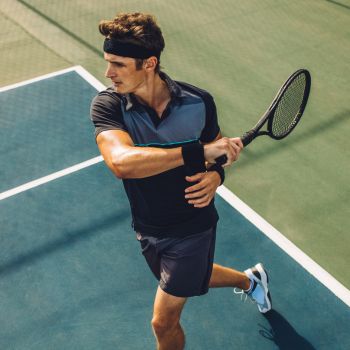
BASKETBALL
Basketball is a popular sport that people of all ages can participate in and play. There are many levels to basketball competition. For example, you can play a pick-up game of basketball or be a player in the NBA. Basketball is a sport for everyone! Unfortunately, basketball is the sport with the most injuries overall. The most common injury for basketball players is ankle sprains. This injury is common because of changing directions quickly while playing. An ankle injury occurs when the ankle is twisted or rolled in an unnatural way causing the joint’s tissues to stretch or even tear. Most ankle sprains heal naturally. However, there are severe cases when a doctor should handle an ankle sprain. If you are suffering from ankle pain after playing basketball, contact our NJ sports medicine doctor to feel pain-free.
FOOTBALL
Unfortunately, while a fun sport to play and watch, football is riddled with potential injuries. One of the most common injuries that football players suffer from is concussions. Football players are required to wear helmets and a wide variety of other protective gear. However, the protective equipment does not always ensure safety when coming in contact with another player at high speeds. Concussions are extremely dangerous as they can lead to a general decrease in the quality of life or even death. Some of the most important symptoms to watch out for if you or someone you know has had a concussion are:
- Headaches
- Confusion
- Dizziness/blurred vision
- Nausea/vomiting
It is essential to take a concussion seriously. Luckily, our NJ sports medicine doctor has had years of experience treating concussions. We have a concussion care team dedicated to helping those suffering from head trauma.
SOCCER
Soccer is a prevalent sport throughout the world. One of the most common injuries for soccer players is knee sprains. Knee sprains range in terms of their severity. For example, a minor knee sprain may result in some time off from soccer. However, it is widespread to tear a ligament within the knee in soccer. More specifically, the ACL is a joint ligament to tear. A torn ACL often requires surgery to repair. If you have had an ACL tear, you will likely experience long rest periods, physical therapy, and rehabilitation to return to playing soccer again. Our NJ sports medicine doctor has vast experience in orthopedics needs, whether general knowledge of an injury or surgery. More specifically, because ACL tears are so common, we have state-of-the-art expertise and training to help you heal as quickly as possible.
Sports Injuries Treated by a Sports Medicine Doctor in NJ
At NY Sports Medicine Institute, our sports medicine specialists in New Jersey treat various sports-related injuries. Whether you’re a professional athlete or a recreational player, our team provides top-notch care for injuries that can occur from participating in sports or physical activities. Led by board-certified sports medicine doctors and orthopedic surgeons, we offer a comprehensive approach to sports medicine to ensure you get back in the game as quickly and safely as possible.
Common Sports Injuries and Conditions Treated
Our sports medicine physicians specialize in treating acute and chronic injuries, including sprains, strains, fractures, and more. Below are some of the most common sports injuries we treat:
Rotator Cuff Injuries
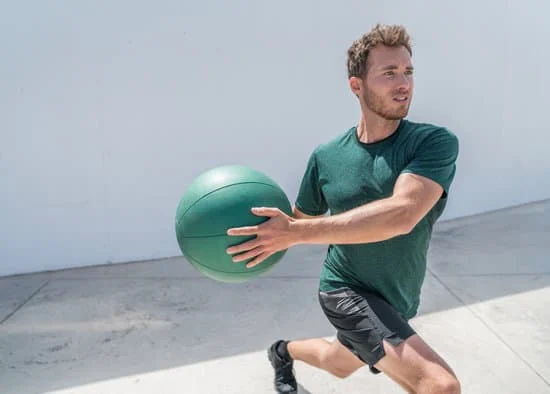
The rotator cuff is a group of muscles and tendons surrounding the shoulder joint, keeping the head of your upper arm bone firmly within the shoulder socket. Rotator cuff injuries are common in sports like baseball and tennis, and our orthopedic sports medicine specialists are well-versed in diagnosing and treating these injuries through both non-surgical and surgical methods.
ACL Tears
An ACL tear is a common injury in sports that involves sudden stops and changes in direction, such as basketball or soccer. Our fellowship-trained orthopedic surgeons specialize in ACL repair and rehabilitation, ensuring you receive the best care possible to get you back on the field.
Foot and Ankle Injuries
Foot and ankle injuries are common in sports such as running, basketball, and soccer. We treat conditions from sprains and strains to fractures and overuse injuries, providing orthopedic care that helps you recover quickly.
Comprehensive Sports Medicine Services in New Jersey
At NY Sports Medicine Institute, we understand that each patient is unique. That’s why we offer a wide range of sports medicine care, including non-surgical orthopedic treatment, rehabilitation, and regenerative medicine. Our board-certified doctors and orthopedic surgeons take into account your individual needs and create personalized treatment plans, helping you recover from sports injuries and return to your active lifestyle.
Our services include:
- Fellowship-trained physicians with specialized expertise in sports medicine orthopedic care
- Musculoskeletal care for injuries and conditions affecting muscles, joints, and bones
- Physical medicine and rehabilitation for both surgical and non-surgical orthopedic conditions
- Regenerative medicine options to help heal cartilage, tendons, and other soft tissues
CONTACT US: NJ SPORTS MEDICINE DOCTOR
New York Sports Medicine Institute has years of experience treating sports injuries of all kinds. We strive to provide ethical, all-encompassing care to help you get back to feeling 100%. If you are struggling with a sports-related injury, we want to help you. Our NJ sports medicine doctor is your best resource for immediate treatment and information on your injury. Contact our office today to make an appointment with our excellent experienced doctors!
